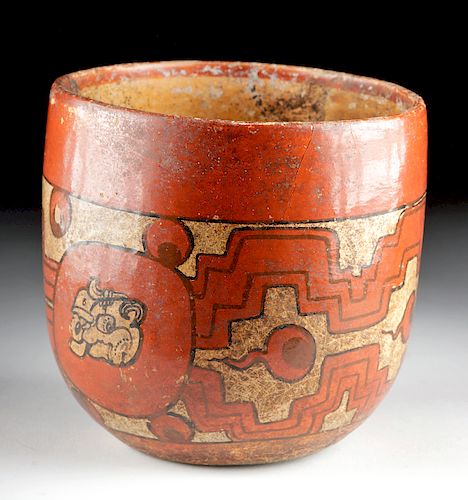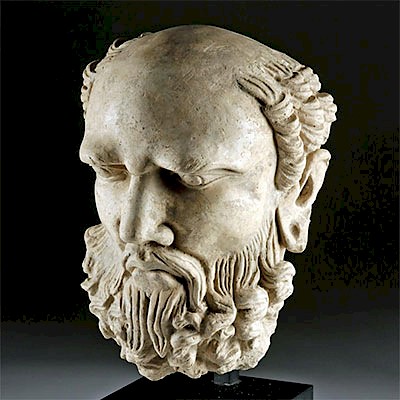Maya Peten Polychrome Short Cylinder
Lot 218
About Seller
Artemis Fine Arts
686 S Taylor Ave, Ste 106
Louisville, CO 80027
United States
Selling antiquities, ancient and ethnographic art online since 1993, Artemis Gallery specializes in Classical Antiquities (Egyptian, Greek, Roman, Near Eastern), Asian, Pre-Columbian, African / Tribal / Oceanographic art. Our extensive inventory includes pottery, stone, metal, wood, glass and textil...Read more
Estimate:
$5,500 - $8,250
Absentee vs Live bid
Two ways to bid:
- Leave a max absentee bid and the platform will bid on your behalf up to your maximum bid during the live auction.
- Bid live during the auction and your bids will be submitted real-time to the auctioneer.
Bid Increments
| Price | Bid Increment |
|---|---|
| $0 | $25 |
| $300 | $50 |
| $1,000 | $100 |
| $2,000 | $250 |
| $5,000 | $500 |
| $10,000 | $1,000 |
| $20,000 | $2,500 |
| $50,000 | $5,000 |
| $100,000 | $10,000 |
| $200,000 | $20,000 |
About Auction
By Artemis Fine Arts
Jan 16, 2020
Set Reminder
2020-01-16 10:00:00
2020-01-16 10:00:00
America/New_York
Bidsquare
Bidsquare : Ancient | Asian | Ethnographic
https://www.bidsquare.com/auctions/artemis-gallery/ancient-asian-ethnographic-4799
Featuring classical antiquities, ancient and ethnographic art from cultures encompassing the globe. Artemis Fine Arts info@artemisgallery.com
Featuring classical antiquities, ancient and ethnographic art from cultures encompassing the globe. Artemis Fine Arts info@artemisgallery.com
- Lot Description
Pre-Columbian, Guatemala, Peten Basin, Maya, Late Classic Period, ca. 550 to 900 CE. A gorgeous hand-built pottery vase with a flat base, tall walls with a tapering lower body, a deep basin, and a thick rim. Thick swath of red-orange pigment adorns the upper rim and lower body just above the base, and the midsection is presented with a creamy white hue. Painted atop the body are mirrored stepped bands with parallel black stripes coursing throughout the interior, with abstract disembodied eyeballs contained within the empty spaces as well as comprising the 'corners' of two circular panels. One circular panel contains a stacked composite glyph, and the other contains a glyph which is perhaps a variation of the glyph for "dog." A fabulous example from the ancient Maya! Size: 5.875" W x 5.7" H (14.9 cm x 14.5 cm).
The Peten region was one of the most densely populated regions in the world during the Maya period, home to several million people and many powerful urban areas, each with their own style of distinctive artwork. They left behind ceramics as dedicatory caches when building monumental and other public structures and residential communities, both of higher and lower statuses - so it was a very widespread practice. They also placed a variety of offertory jars into tombs. In some cases, these jars were filled with food and drink explicitly given to the gods. In other examples, as at the Temple of the Hidden Jars at the late Postclassic site of Ixlu, Peten, jars were filled with soil, perhaps to represent the earth with all its agricultural possibilities.
Provenance: private California, USA collection; ex-Arte Primitivo Gallery, New York, New York, USA; ex-Marc Schmidtt collection, Florida, USA, acquired in 1982
All items legal to buy/sell under U.S. Statute covering cultural patrimony Code 2600, CHAPTER 14, and are guaranteed to be as described or your money back.
A Certificate of Authenticity will accompany all winning bids.
We ship worldwide and handle all shipping in-house for your convenience.
#145825Minor abrasions and nicks to rim, body, and base, with stabilization a couple of lengthy fissures, and light encrustations within basin. Light earthen deposits throughout. Coloration and iconography are still visible and vivid. Old inventory label written in black ink beneath base.Condition
- Shipping Info
-
All shipping is handled in-house for your convenience. Your invoice from Artemis Gallery will include shipping calculation instructions. If in doubt, please inquire BEFORE bidding for estimated shipping costs for individual items.
-
- Buyer's Premium



 EUR
EUR CAD
CAD AUD
AUD GBP
GBP MXN
MXN HKD
HKD CNY
CNY MYR
MYR SEK
SEK SGD
SGD CHF
CHF THB
THB
















